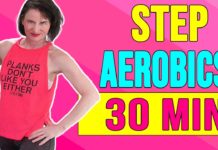Yoga for Beginners – 10 Morning Yoga Poses at Home
Video
Description
Yoga in the morning is amazing! An energizing morning yoga practice can work as a natural stimulant to set you up for a productive day. If you feel lethargic all day long, if you feel down and dull though you wake up early in the morning, it is due to the loads and loads of work that we have to do every day. We don’t find time to keep fit. Yoga is the best means to keep your body fit and your mind energetic and relaxed.
Here are 10 Yoga Poses for Beginners at Home
Tadasana – Mountain Pose
Tadasana is a basic standing posture that is a great foundation for many asanas. It creates space in the spine allowing the body to work more efficiently and with more ease.
Cat Cow Pose
Cat-Cow is a gentle sequence of two poses that stretches the spine and prepares the body for activity. A wonderful way to start off any yoga practice is with a round Cat Pose to Cow Pose. This Cat Cow pose helps relieving back pain and also helps to stregthen the back.
Phalakasana – Plank Pose
Plank is a truly foundational pose. It teaches you to hold yourself together like a sturdy wooden plank—giving you the power you need for complex poses and the grace to glide with ease through transitions between poses. Plank will build your abdominal strength; you might even find yourself shaking as you practice it. It can strengthen your arms and keep your wrists supple and healthy.
Adho Mukha Svanasana – Downward Dog Pose
Adho Mukha Svanasana posture replicates a dog bending forward, hence the name downward facing dog pose. This asana can be practiced by any beginner too and with all its benefits, one should include it as a part of daily yoga practice. It is a standing pose and mild inversion that builds strength while stretching the whole body.
Trikonasana – Triangle Pose
Triangle Pose is a standing yoga pose that tones the legs, reduces stress, and increases stability. The word “Trikonasana” comes from the Sanskrit words “tri,” (meaning “three”), “kona”(meaning “angle”), and “asana” (meaning “pose”). It refers to the triangular shape created by your body in the full version of the pose. A deep stretch for the hamstrings, groins, and hips, Trikonasana also opens the chest and shoulders. It helps relieve lower back pain, stress, and sluggish digestion.
Vriksasana – Tree Pose
Vrikshasana or tree pose is a wonderful pose that teaches balance while toning the muscles of the legs. This elegant pose is not as easy as it looks, but over time it builds tremendous inner and outer strength and a great feeling of accomplishment as you learn to balance on one leg.
Virabhadrasana I – Warrior 1 Pose
Warrior 1 — Virabhadrasana 1 is a standing yoga pose named after a mythological Hindu warrior, Virabhadra. Virabhadrasana I stretches the whole front side of the body while strengthening the thighs, ankles, and back. This is a powerful standing pose that develops stamina, balance, and coordination. It tones the abdomen, ankles, and arches of the feet.
Virabhadrasana II – Warrior 2 Pose
Warrior 2 — Virabhadrasana II is a standing yoga pose named after a mythological Hindu warrior, Virabhadra. A powerful stretch for the legs, groins, and chest, Virabhadrasana II also increases stamina. It helps to relieve backaches, and stimulates healthy digestion. This is a deep hip-opening pose that strengthens the muscles in the thighs and buttocks. It tones the abdomen, ankles, and arches of the feet.
Ustrasana – Camel Pose
Camel Pose (Ustrasana) is a backbending yoga posture that opens the entire front side of the body. It is an intermediate level back-bending yoga posture known to open Anahata (Heart chakra). This yoga posture adds flexibility and strength to the body and also helps in improving digestion.
Ardha Matsyendrasana – Half spinal twist
Ardha Matsyendrasana usually appears as a seated spinal twist with many variations, and is one of the twelve basic asanas in many systems of Hatha Yoga. This is one of the few poses in the Basic Session that rotates the spine. Most bend the spinal column either backward or forward, but to become truly flexible it must be twisted laterally as well. The movement also tones the spinal nerves and ligaments, and improves the digestion.
Watch more:
Follow us on Facebook:
Subscribe us on YouTube:
Follow us on Instagram:
Follow us on Twitter:
A Ventuno Production






 18°DAY/21° Rinascita del corpo
18°DAY/21° Rinascita del corpo
 | Spring Yoga Challenge | Alcanda Kundalini Yoga
| Spring Yoga Challenge | Alcanda Kundalini Yoga






